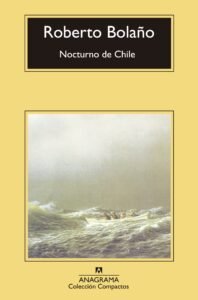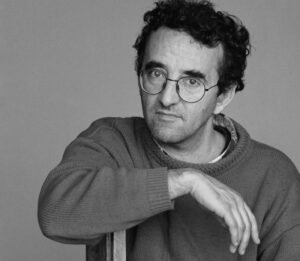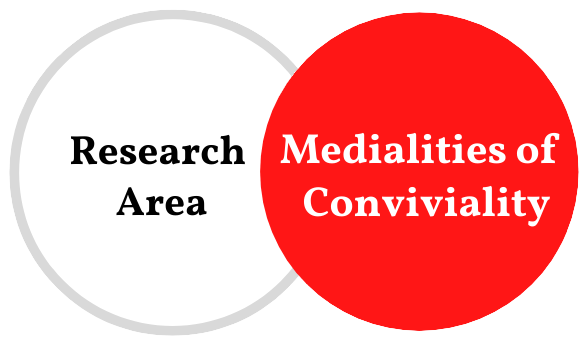History and Fiction Living Together in Roberto Bolaño’s Narratives
Global Convivial Forum
Bolaño’s works associate real epistemic violence and lack of justice with brutal, implausible fictional situations.
Jorge I. Estrada (Mecila Junior 2021)
Bringing an unsettling side of conviviality to the fore is perhaps one of the most enticing features in Roberto Bolaño’s narratives. His fiction delves into historical catastrophes and social conflicts to depict individuals entangled in a chaotic world. These characters move through exceptional situations in which living together is far from having positive connotations, far from any idea of sharing the produce of progress, and far from the harmony that a humanist would ground on understanding and reason.
Quite to the contrary, these situations are macabre and reveal a dystopic way of living together. They subvert any enlightened or humanist expectations. While portraying scenes of a possible world that we might even recognise because it is closely knit together with referential hints and a realist tenor, they can only evoke estrangement and discomfort.
Bolaño’s prose turns the everyday into something gruesome. He makes us witness a nightmare without taking a metaleptic leap into the realms of dreams, the unreal or fantastic. He does not even allow the uncanny to take over reality with plot twists or sudden insights into a character’s personality and motivations. This is the fundamental ambiguity of Bolaño’s worlds: an impending apocalypse that – paradoxically – already took place and which we are only just beginning to notice.
We, the readers, become accountable for linking history, fiction, shared imaginaries, and ideologies, all of which intertwine through diverse narrative strategies. In Nocturno de Chile (2000), for instance, history is presented using a combination of historical references, metaphors, and an allegorical intention. The past comes alive, and the story reveals the surface of the exceptional circumstances of the events through unsettling interactions. The past is an unconcealed evil that confronts us at every instant with violence and destruction.
This is particularly striking in a scene that begins with an unexpected visit. Two government agents from Pinochet’s dictatorship, Hate and Fear, approach the protagonist, a literary critic and Catholic priest named Sebastián Urrutia Lacroix. In this setting, we find an immediate sense of foreboding, but there is also a crucial detail that lies beyond the names and obscure professions of these characters, a detail in the landscape, revealed just before a ‘friendly’ interrogation: the “enormes araucarias que se alzaban catedralicias” (102–103).
The metaphor “huge araucaria trees rising cathedral-like” establishes the background against which experiences unfold. The narrator’s description of the surroundings combines an essentialist claim regarding the New World’s land and its past evangelisation and colonisation. The autochthonous araucarias represent an original nature that is appropriated and becomes an expression of Christianity as if they were the rib vault of a Gothic cathedral rising towards the sky. By pitting a tree native to Chile against religion, the narrator implicitly constructs an analogy between the colonial past and the dictatorial present. Ever-renewing destruction is thus the backdrop of this story and also the setting for the agents’ request. They ask (or command) the protagonist to teach Pinochet and his staff a course on Marxism. Despite suspecting a trap for insurgents, he cannot refuse and proceeds to prepare ten lessons for the collision of two ideological standpoints – if not two worlds, like in colonial times – a collision that leads to one-sided, systematic violence and the demise of peoples.
The text describes the course as if taught in any formal or institutional setting, with both outstanding and somnolent students. The only difference is that pronouncing any name or word can have life-or-death consequences. But nothing out of the ordinary arises until later, when a friend asks the protagonist about his experience and whether he found anything “exceptional” in Pinochet’s character. The protagonist only mentions the dictator’s preoccupation with surrounding himself with books and becoming a well-read and published intellectual.
A humanist interest in gathering sources of knowledge as well as recognizing and understanding different ideologies becomes an instrument to achieve atrocious ends. Even if we cannot speak of conviviality in this context of domination, the novel attempts to imagine those reasonable men and women who participated in rituals of destruction. They negotiated their everyday lives in the asymmetrical position that Fear and Hate created.
The violent rituals and exceptions, or rather the arbitrariness that seems to ground norms and establish order, are also identifiable outside an institutional setting. For example, in 2666 (2004), we meet a group of literary critics who find each other in international conferences and tacitly form a research group. Eventually, this intimacy goes beyond purely intellectual interests and becomes a love triangle.
The characters find themselves discussing their love affairs during a taxi ride at one point in the story. Their encounter with the Pakistani driver is blatantly stereotypical. The critics carry on their conversation without noticing that the topic vexes the driver, who quietly continues performing his duties after uttering a word in an unidentified language. After a pause, the driver admits that the labyrinth that is London has managed to disorient him. The Spanish critic declares to his peers that the driver has unknowingly cited Borges, while the British critic replies that Dickens and Stevenson had already made that comparison. Annoyed by their paternalist tone towards him, the driver explains that the comparison is obvious and exclaims that though he might not know his way around London, he knows what decency is. He insults their openness to discuss and engage in free love. Their fragile masculinity hurt, one of the critics grabs the driver out of the vehicle, and together they beat him, thus strengthening their sense of community.
The artificiality of this passage is deeply provocative. While it is not impossible, for some it might seem out of character and implausible for researchers in the humanities with a university education to revel in violence. Why would we assume it to be impossible, even for a moment? We must bear in mind the biopolitical hierarchy that acts as the backdrop for the scene. Even so, this kind of epistemic violence pales in comparison to the brutal incident and to the fact that it only made the local news as if it were nothing unusual. Perhaps this is the moralist in Bolaño. The author manages to make expectations reveal how the same inequalities and power relations can play out or be actualised differently. His works convey how some biopolitical assumptions perpetuate and encourage these situations, and they associate epistemic violence and lack of justice with a most brutal result, even if barely plausible.
Bolaño challenges any interpretative framework by inviting the reader to engage with the fabric of a plot, with the flaws and strengths channelling our expectations and allowing us to follow the story. He pleas for revisiting any event, for being wary of any stable representation, and for disarticulating any rigid connection between an event and its meaning. Monsieur Pain (1984), set in Paris before World War II, provides an intricate example of this disarticulation. The novel consists of a first-person narration surrounding a mesmerist who attempts to save the life of Peruvian poet César Vallejo by curing his mysterious case of the hiccups. The preliminary note tells us that the story is based on true events, so we can infer from the beginning that the mesmerist treats Vallejo to no avail because there is no magic cure for this real illness. Despite the hints at Poe’s mesmeric short stories, nothing that happens in the plot is fantastic, certainly not the death of an impoverished migrant and poet.
The poet’s death resulted from social circumstances and was caused by a lack of access to proper health care. And yet, Bolaño refuses to accept the necessity of the past and the tragic destiny of a poet who lives in the margins of Parisian society but will become a central figure in the foreign Latin American canon. For this reason, he deploys counterfactual claims and flirts with fantastic literature to challenge the past as a psychotic reaction to the inequalities that made Vallejo a case of living death, a chimerical body tied to the ontic and material world just by a hiccup. Vallejo’s dispossession challenges historical necessity and an inescapable societal given, questioning the symbolic underpinnings that are fatally embodied.
These incidents exemplify the various ways in which Bolaño grapples with diverse discourses and explanatory frameworks. This examination of a symbolic order is only possible through fiction, that is, by drawing attention to its artificiality and by giving piecemeal bits of referential, counterfactual, ideological, or even allegorical elements. The interfictional structuring that relies on genres such as the fantastic and a wild intertextuality invites us as readers to unhinge norms and dissect experience. We must sever the presupposed cohesion of facts, conceptual frameworks, actions, and meaning. Interfictionality opens a chasm in history, and these overlapping stories threaten to become enacted in every interaction and every asymmetrical negotiation with each other. This accretion of meanings, which a highly codified structure of artistic representation achieves, erodes the clarity of autonomous reason and proposes a relational approach to events: a virulent contamination between history, facts, and fiction.
Image: Cia. das Letras
Cover of Roberto Bolaño’s “Nocturno de Chile”, Editorial Anagrama/2015.


References
Roberto Bolaño (2000): Nocturno de Chile, Barcelona: Anagrama.

